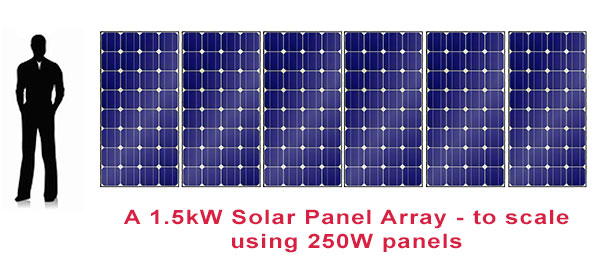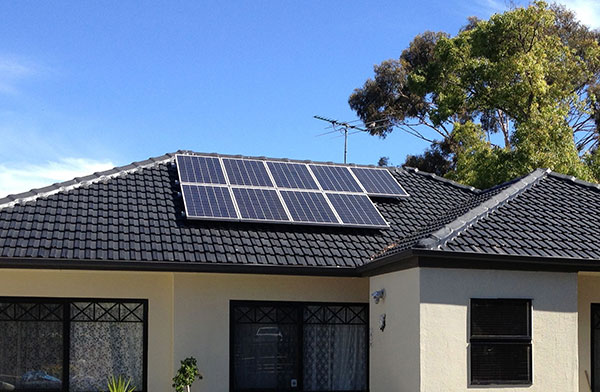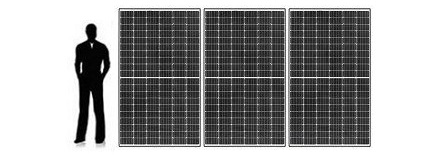1.5kW Solar System
Last Updated: 27th Jan 2025
The humble 1.5kW solar system was Australia’s most popular solar power system from about 2011 to 2013. It has now been well and truly overtaken in popularity by the 6.6kW system and increasingly by 10kW solar.
Why was 1.5kW so popular? Well, before Jan 1 2013 the rebate system was skewed to max out at 1.5kW. Due to a scheme called the “solar multiplier” you used to get twice the rebate for the first 1.5kW of any system, compared to subsequent kWs. So in terms of dollars per kW, a 1.5kW system represented the best value.
However, all that has now changed. The “solar multiplier” which favoured 1.5kW solar systems is gone. But don’t panic! We still have a solar rebate! To cut a long story short, you can now get a subsidy of approximately $300 for every kW installed.
How many solar panels make up a 1.5kW system?
Back when they were popular a 1.5kW may have had six 250W solar panels. Each was around 1.6m x 1m, so you needed at least 10m² of roof space.
To give you a feel for how big 10m2 is this picture may help:

And here’s what a 1.5kW system looks like on a roof (this one is made up of 9 x 165W panels – so it’s a *really* old system):

These days, because panels are both larger and more efficient, a 1.5kW solar system only requires 3 or 4:

How much electricity will a 1.5kW solar system generate?
A 1.5kW solar system will generate approximately 6kWh per day. This is under half the electricity consumption of the average aussie household. But I also have friends with very efficient homes for which a 1.5kW system offsets all their electricity usage.
Note: if you are serious about solar it is really important you understand the difference between a kW and a kWh. That link explains all!
How much revenue will a 1.5kW solar system generate?
The amount of cash you make from a 1.5kW system will depend on how much you get paid for exported electricity and how much you export.
Most states in Australia pay about 5 – 8c per kWh for exported electricity. And most people pay about 30c per kWh to buy electricity from the grid. So let’s consider 3 scenarios to see how the payback works:
1) You use all the solar electricity in your home. This is likely if you run a pool pump or other appliances through the middle of the day. You would save approximately $650 in the first year. And about $21,000 over 20 years, assuming electricity inflation of 5%.
2) You export half the electricity: You would save about $400 in the first year.
3) You export all the electricity: You would save about $140 in the first year.
If you think that this sounds very counterintuitive, then you can read about the relationship between exports and payback here.
How much will a 1.5kW solar power system cost?
Expect to pay about $2,500 – $4,000 out of pocket, after the rebate. As mentioned, you’ll get much better bang for buck with a larger system. For example, a good quality 6.6kW system in 2025 starts at around the $5,500 mark – so you’ll get more than 4 times the capacity (power) for only around twice the price.
How long before a 1.5kW solar power system pays for itself?
If you don’t need to export any of the solar electricity then it will have paid for itself in around 5 years or less, assuming you pay 30c for your electricity from the grid. But I’d argue that simply looking at the payback is a daft way to asses a solar purchase. I’d argue that cash flow is much more important.
With current solar pricing, most solar systems end up cash flow positive from day one – compared to keeping your cash in the bank, or the interest on financing the solar system. But don’t take my word for it (I wouldn’t!). Play with the numbers in my solar payback calculator and see if the return on investment makes sense for you.